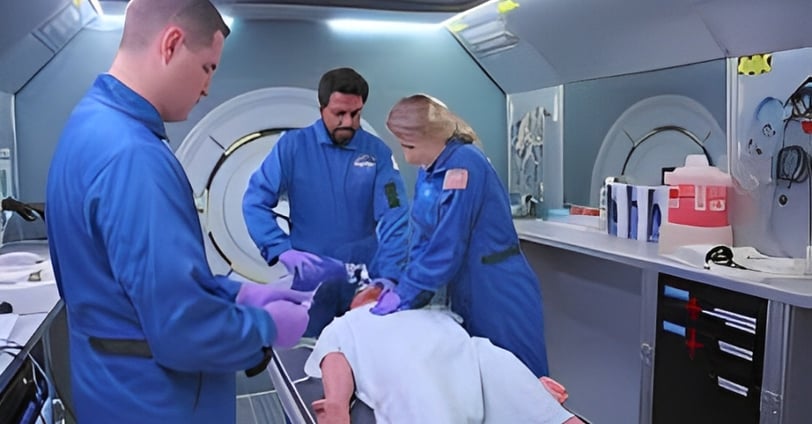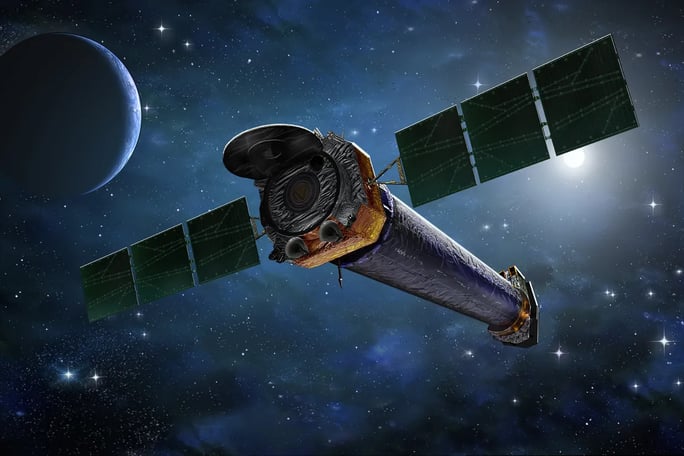The Role of X-ray Technology in Space Exploration and Research
Space exploration has come a long way since the first moon landing, with countless missions now venturing into the cosmos. From analyzing distant stars and galaxies to studying other planets and celestial bodies, scientists and researchers have used a wide range of technologies to gather valuable information. One such tool, X-ray technology, plays a crucial role in unveiling the mysteries of space. Though commonly associated with medical imaging on Earth, X-ray technology also has significant applications in space research and exploration. In this blog, we’ll explore the importance of X-ray technology in space exploration, from analyzing distant celestial bodies to advancing our understanding of the universe.
3/21/20254 min read


1. X-rays: A Powerful Tool for Space Research
X-rays are a form of electromagnetic radiation, just like visible light, radio waves, and microwaves, but with much shorter wavelengths. Due to their high energy, X-rays can penetrate matter, making them incredibly useful for studying the high-energy processes that occur in space. This ability allows researchers to examine objects and phenomena that are otherwise invisible or difficult to study using other forms of radiation.
Because X-rays can pass through matter, they provide a unique perspective on the universe, helping to reveal the hidden features of celestial bodies and cosmic events. This capability is especially important in studying objects like black holes, neutron stars, supernova remnants, and galaxies that emit high-energy X-rays.
2. Studying Black Holes and Neutron Stars
One of the most fascinating applications of X-ray technology in space exploration is the study of black holes and neutron stars. These cosmic objects are known for their intense gravitational fields and extreme conditions. When matter gets close to a black hole, it heats up and emits large amounts of X-rays before being pulled in. X-ray telescopes can detect this radiation, helping scientists understand the properties of black holes and their surrounding environments.
Neutron stars, the remnants of massive stars that have exploded in supernovae, also emit high-energy X-rays. X-ray observations allow astronomers to study the magnetic fields and rotational dynamics of these objects, which are often millions of times more powerful than anything we encounter on Earth.
In 1974, the Einstein Observatory, the first satellite to carry an X-ray telescope, provided groundbreaking data on the X-ray emissions from black holes and neutron stars, significantly expanding our knowledge of these enigmatic objects.
3. X-ray Astronomy and Observatories
While Earth's atmosphere blocks most of the X-ray radiation from space, space-based observatories can capture these high-energy emissions, making X-ray astronomy possible. Telescopes such as Chandra, XMM-Newton, and the Swift satellite have revolutionized our understanding of the universe by capturing X-ray images of various cosmic phenomena.
Chandra X-ray Observatory: Launched in 1999, Chandra is one of NASA’s most significant space telescopes. It has provided detailed images of some of the most dramatic and energetic events in the universe, including X-ray emissions from galaxies, clusters, and even the remains of exploded stars. By observing these objects in X-ray wavelengths, Chandra helps scientists explore the violent processes occurring in these regions, shedding light on how galaxies evolve and how cosmic structures are formed.
XMM-Newton: Another key player in X-ray astronomy, the XMM-Newton satellite, launched by the European Space Agency in 1999, has provided invaluable data on a wide range of astronomical objects. Its high-resolution X-ray imaging capabilities have helped scientists study phenomena such as supernova remnants, galaxy clusters, and black hole accretion disks.
Swift Satellite: The Swift satellite, launched in 2004, has been instrumental in studying gamma-ray bursts and the extreme environments associated with these high-energy explosions. By observing the X-ray emissions from these bursts, scientists can gain insights into the most energetic events in the universe.
These observatories help scientists analyze celestial bodies that would otherwise remain hidden due to the opacity of the Earth’s atmosphere. They provide a clearer picture of objects in the universe that emit high-energy radiation, which is essential for understanding the universe’s structure and evolution.
4. Studying the Composition of Planets and Moons
X-ray technology also plays a role in planetary exploration. X-ray spectrometers have been used in space missions to study the surface composition of planets, moons, and asteroids. By measuring the X-rays emitted by surface materials when they are bombarded by solar radiation or cosmic rays, scientists can identify the elements and minerals present on these bodies.
Mars Rover Missions: The Curiosity Rover, which landed on Mars in 2012, is equipped with an X-ray spectrometer designed to analyze the planet’s surface. This tool helps determine the composition of Martian rocks and soil, providing valuable information about the planet’s geology and the potential for past life.
Apollo Lunar Missions: During the Apollo missions to the Moon, astronauts used portable X-ray devices to study the Moon’s surface. The X-ray spectrometers helped identify the chemical makeup of lunar rocks, providing insights into the Moon’s formation and history.
X-ray technology, in conjunction with other scientific instruments, has been essential for understanding not only the composition of distant planets and moons but also their potential for harboring life or supporting future exploration.
5. X-rays in Space-based Medical Research
In addition to studying the cosmos, X-ray technology has applications in space-based medical research. For astronauts on long-term missions, the ability to monitor their health is crucial, especially when they are far from Earth. X-ray technology can be used to monitor bone density, muscle health, and even the impact of space radiation on astronauts’ bodies.
The International Space Station (ISS) is equipped with medical facilities that utilize X-ray imaging to monitor the health of astronauts. This helps ensure that astronauts can continue their work safely in space while also allowing researchers to gain valuable insights into how the human body adapts to the space environment.
6. The Future of X-ray Technology in Space Exploration
As space exploration continues to advance, the role of X-ray technology will only become more critical. With missions to Mars, the Moon, and beyond, X-ray imaging will help researchers gather essential data about the composition of planets and moons, the behavior of cosmic phenomena, and the health of astronauts in space.
Emerging technologies, such as X-ray telescopes with higher resolution, AI-driven analysis of X-ray data, and advanced spectrometers, will further enhance our ability to explore the universe. These tools will provide even more precise and detailed images, allowing us to understand the universe in ways that were previously unimaginable.


Reference Website Links:
NASA - X-ray Astronomy
Website: https://www.nasa.gov/mission_pages/chandra/main/index.html
NASA - Swift Satellite
Website: https://swift.gsfc.nasa.gov
NASA Astrobiology Institute
Website: https://astrobiology.nasa.gov
JAXA (Japan Aerospace Exploration Agency)
Website: https://www.jaxa.jp
Space.com - X-ray Astronomy
Website: https://www.space.com
